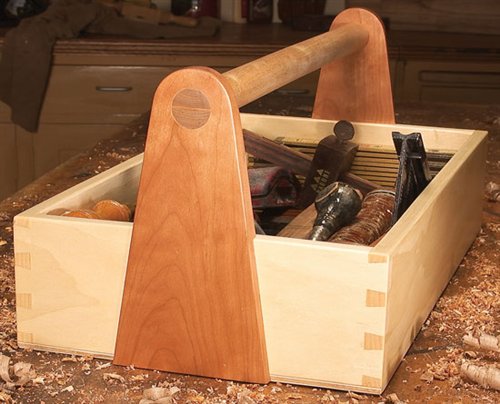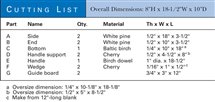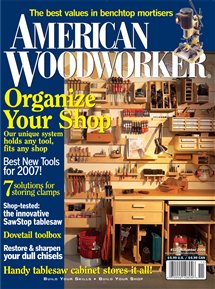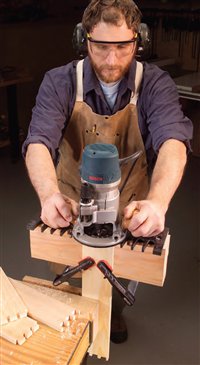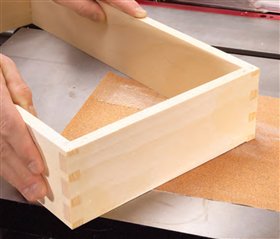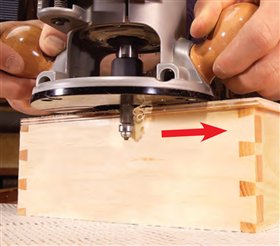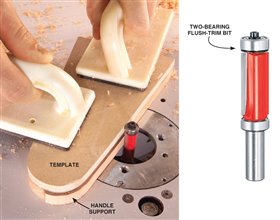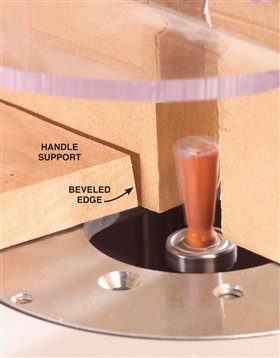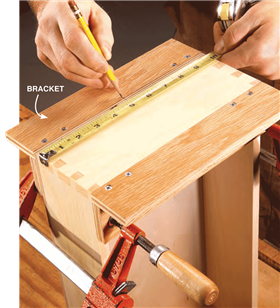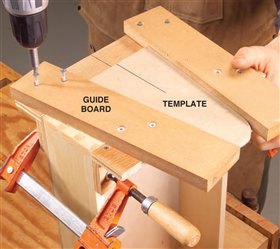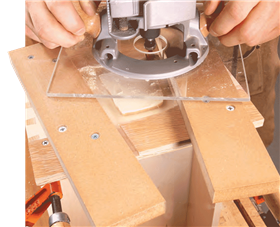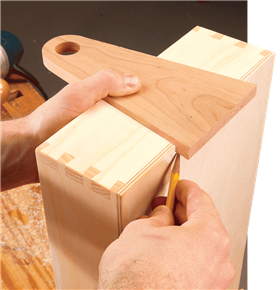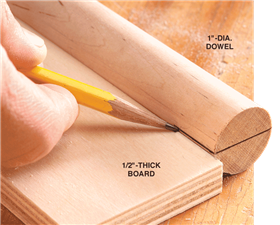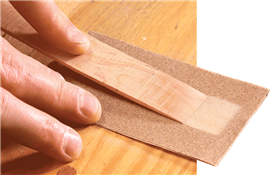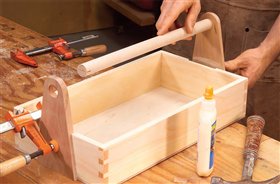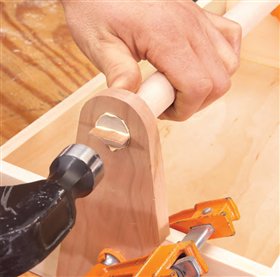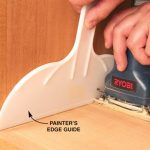We may receive a commission when you use our affiliate links. However, this does not impact our recommendations.
Dovetailed Tool Box
Fill it, carry it, bang it around: These joints will last forever.
By Seth Keller
| A lightweight, sturdy toolbox is perfect for odd jobs around the house. Carpenters used to make their own, just nailed together. I’ve built a more sophisticated design using two different dovetail joints.
The corners of my toolbox are held together with through dovetails. The cherry handle supports are dovetailed, too, but this joint is more subtle. It’s a huge tapered, sliding dovetail. (Fig. A, Detail 2, below). To make this joint, I used a special dovetail bit and a shop-made jig. The jig is so simple that I can guarantee you’ll get a perfect fit right off the bat.
Tools and materialsYou can make this box with many different dovetail jigs. I used a Keller (no relation!) through-dovetail jig for the corners (see Sources, below). Other through-dovetail jigs will work, but you may have to change the width of the box’s sides for the spacing between the pins and tails to look good. You can also use a half-blind dovetail jig, the kind widely used for making drawers. If you do, you might have to increase the thickness of the sides and ends to accommodate the dovetails’ length. I used white pine for the sides; it’s lightweight and easy to sand. I used cherry for the handle supports because it’s stronger and contrasts nicely with the pine.
Dovetail the box1. Mill the sides (A) and ends (B) to final dimensions (see Cutting List, below). 2. Dovetail the corners (Photo 1). Glue the box together. 3. Even the box’s top and bottom edges with 150-grit sandpaper (Photo 2). Use the same method to level the dovetails. 4. Cut the bottom (C) slightly oversize and glue it to the box. Use three or four clamps per side to ensure a tight fit. When the glue is dry, use a router to trim the bottom flush with the sides (Photo 3).
Make the handle supports5. Mill the handle supports (D) to rough dimensions. 6. Make a template (Fig. A, Detail 1, below) for the supports. I use 1/2-in. MDF for router templates, but plywood works fine, too. Cut the angled lines on the template with a bandsaw or jigsaw, and then straighten the edges with a sanding block or file. Trace the template onto the supports. Cut 1/16 in. outside the line with a bandsaw or jigsaw. Affix one support to the template with double-faced tape. 7. Shape the support on a router table (Photo 4). Tear-out can be a real problem on the rounded end of this piece. With a standard flush-trim bit, you’d cut with the grain on one side of the piece and against the grain on the other side, risking tear-out. The best solution is to use a flush-trim bit that has two bearings: one bearing above the cutter and one below (see Sources, below). Use the top bearing to rout the support’s left side, as shown in the photo. To rout the other side, flip the support and template. Raise the bit so the bottom bearing rides against the template, which is now underneath the support, and complete the routing. 8. Bevel the supports’ sides using a dovetail bit with a bearing (Photo 5). I use the bit that comes with the Keller jig, but you can also buy it separately. The bearing isn’t needed in this step, but it’s crucial for routing the box later. Raise the bit 1/2 in. above the table and adjust the fence even with the lowest cutting edge of the bit. Bevel both sides, but don’t go around the top end. Leave it square. Sand the small transitions from the sides to the top end so these aren’t abrupt changes. 9. Drill a 1-in.-dia. hole in the support (Fig. A) to receive the handle (E). Use a Forstner bit to make a clean, accurate hole.
Fit the handle supports10. Rout a recess in the box’s sides using the dovetail bit with a bearing from Step 8. This recess will have beveled edges to match the supports. This step requires a jig, which you’ll make in stages. To begin, build two brackets from 2-in.-wide material and clamp them to the box (Photo 6). Don’t put any screws in the bracket’s middle because you will be routing through this section. 11. Mark a centerline on the bracket attached to the box’s bottom. Clamp the box to your bench. Align the support’s template on the centerline, even with the box’s bottom. 12. Glue and screw two guide boards (G) to the brackets (Photo 7). Rout a 1/4-in.-deep recess all the way across the box’s end using the same dovetail bit you used for the supports (Photo 8). Remove the jig, clamp it to the box’s other side, and rout a second 1/4-in.-deep recess. 13. Push each handle support into its recess and mark the excess length (Photo 9). Adjust your tablesaw’s miter gauge to approximately 9 degrees and trim the supports. Slide the supports back into the box.
Make the handle and wedges14. Measure the distance between the outer faces of both supports. Cut the handle (E) to this measurement. Mark centerlines on both ends of the handle (Photo 10). 15. Bandsaw 1/2-in.-long kerfs on the centerlines using a fence and a V-block to support the dowel. Test the fence setting with extra dowel stock before cutting the handle. 16. Mill a blank for the wedges (F). It should be about 1/32 in. thicker than the saw kerf. It’s safer to rip this piece from the left side of a board rather than to set your fence a very short distance from the blade. Sand 1/2-in.-long tapers on both ends of the blank (Photo 11). Crosscut the wedges by hand or by using the bandsaw.
Assemble the supports and handle17. Glue the supports and handle (Photo 12). Make sure the handle’s saw kerfs are horizontal. 18. Drive in the handle’s wedges immediately after assembling the supports (Photo 13). Sand or plane flush the handle’s ends and supports after the glue is dry. 19. Sand and finish the entire box.
Cutting List
Fig. A: Exploded View, Details 1 & 2SourcesNote: Product availability and prices are subject to change. Freud Inc., freudtools.com, 800-334-4017, Top-and-bottom-bearing MLCS, mlcswoodworking.com, 800-533-9298, 7-degree Woodcraft, woodcraft.com, 800-225-1153, 1-in.-dia. birch dowel, 36 in., Keller & Co., kellerdovetail.com, 800-995-2456, Journeyman This story originally appeared in American Woodworker November 2006, issue #125. |
Click any image to view a larger version.
1. Rout dovetails
2. Sand the
3. Rout the
4. Shape the
5. Bevel the handle support’s
6. Build a jig to
7. Align the handle
8. Rout a recess
9. Slide a support
10. Mark centerlines
11. Taper both
12. Glue and
13. Tap the |
Here are some supplies and tools we find essential in our everyday work around the shop. We may receive a commission from sales referred by our links; however, we have carefully selected these products for their usefulness and quality.



